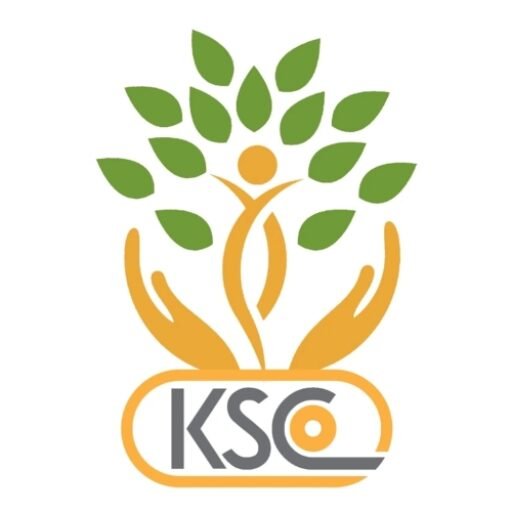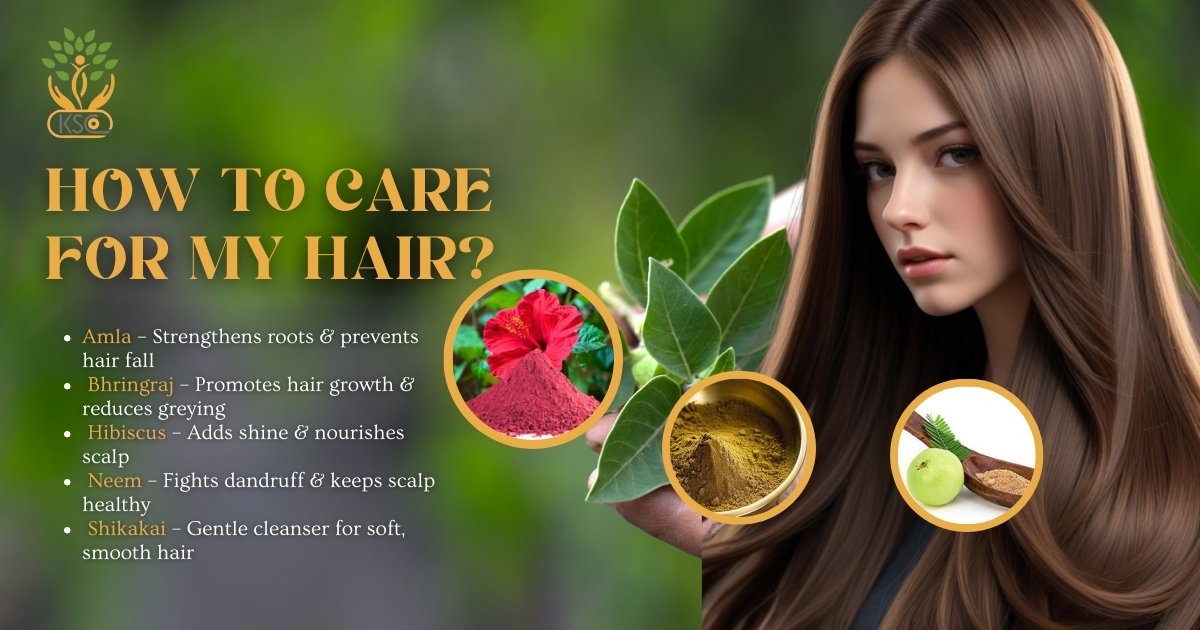Regularly caring for your natural hair is the first step to having healthy hair. This blog gives easy-to-follow methods for using herbal principles to clean, feed, and protect the scalp.
Recoganise Your Scalp and Hair
Find out if your scalp is oily, dry, or a mix of the two, then write down common problems like split ends, dryness, breakage, and hair loss. This tells you what the proper routine is.
Select Herbal Elements
Utilise products derived from natural herbs that have demonstrated efficacy. Look for solutions with amla, bhringraj, hibiscus, neem, and shikakai. These are believed to strengthen roots, eliminate dandruff, and make hair shine. When you use something every day, look for options that don’t have chemicals in them.
Cleaning the Scalp
Wash your hair every three to five days, depending on how oily it is. Gently massaging the shampoo will help blood flow. Herbal cleansers remove dirt without removing the natural oils on the scalp. Instead of hot water, use warm or cold water to keep things wet.
Use Oils and Masks to Strengthen
First, use warm herbal oil. Massage your scalp well. Let it sit for at least half an hour or overnight before washing it. After that, put on a mask of crushed hibiscus or powdered shikakai. Shikakai helps keep tangles at bay and cleans without bleaching. After washing your hair, use a mild herbal conditioner or rinse it with diluted henna or amla water. Rinse well to keep things from building up and to get a shiny finish without adding weight.
Washing and drying
Don’t rub the towel too hard. Gently blot. Let your hair dry in the air. Use wide-tooth combs (ideally made of natural products) when your hair is wet to keep it from breaking.
Hydration and Nutrition
A diet with iron, omega-3 fats, proteins, and vitamin C will help your hair stay healthy. Make sure you drink enough water. A well-hydrated body makes the hair easier to style and care.
Prevention of Risk
Use serums that protect your hair and only a little heat when needed. Avoid haircuts that are too tight and pull on your roots.
Hair and Scalp Therapies
Use herbal sprays or tonics with neem, bhringraj, or rose petal extracts. Dried rose petals give dry hair a natural shine and smoothness.
Routine Trimming
Every eight to ten weeks, cut away any weakened or split hairs. This helps the hair to grow healthy and protects it from damage.
Products from K. Somu Chetty & Co.
Our business sells natural things like shampoos, conditioners, masks, and herbal oils, which are good for hair and scalp without harsh chemicals.
- Herbal hair oils made with amla, bhringraj, hibiscus, and neem.
- Shampoos and conditioners are free from synthetics.
- Masks and treatments harnessing botanical extracts.
These products include herbal conditioning, oil massage, scalp toning, and gentle washing.
Recommended Procedures for Using Their Products
| Step | Action | Product Type |
Oil massage | Apply herbal oil (amla, bhringraj blend), leave 30 min–overnight | Hair oil |
| Cleanse | Use mild herbal shampoo every 3–5 days | Herbal Shampoo |
Mask | Apply powdered herbal mask or rose-based mask weekly | Mask/treatment |
| Condition | Rinse with conditioner or herbal rinse | Herbal conditioner |
| Tonic | Spray or tonic using hibiscus or neem extract | Scalp treatment |
Ways to Avoid Typical Issues
- Hair fall: Regular oil massage will improve your bloodflow.
- Dandruff: Neem or shikakai regulates microorganisms on the scalp.
- Dryness: Instead of sulphates, you can use herbal conditioning. Use masks that contain fatty acids or lecithin. Trim your hair regularly.
What Makes it Effective?
Natural botanicals like amla and bhringraj provide nutrients and antioxidants that strengthen hair follicles and reduce oxidative stress. Shikakai cleanses gently without soap, and hibiscus and neem calm irritated skin. The holistic approach finds a middle ground between bathing, feeding, and caring for the scalp.
Hibiscus adds extra protein and moisture to the hair shaft. The natural pulp of the hibiscus has fibres that make it smooth and silky. It also makes the scalp dry and keeps its pH level stable. Neem is well-known for its ability to kill germs and fungi. It also helps to reduce dandruff and calm irritated scalps. Using neem often helps keep infections, inflammation, and itching to a minimum, which can mess up typical hair cycles.
Shikakai is an excellent cleaner for your hair. It has natural substances that clean the scalp. Shikakai keeps hair moist and prevents hair follicle problems, unlike shampoos. This makes the perfect base for oils and masks to soak up nutrients.
This mix works because it wakes the scalp and prepares it for steady hair growth. These things do more than fix frizz or shine on the outside. They make the roots stronger and calm the scalp. The result is stronger, longer, and more potent hair over time, without the accumulation of stress that synthetic chemicals produce. The most important thing is to use them as part of a regular care routine.
Conclusion
The most important thing to remember when caring for natural hair is consistency. One oil massage or herbal rinse won’t change your hair very much. But oiling, cleansing, masking, conditioning, and protecting every week strengthens the hair over time. The herbs need time to maintain the roots, improve blood flow, and bring the scalp back into balance. Over time, you’ll notice that your hair falls out less, feels smoother, shines more, and breaks less. After the process, your hair will be able to adjust more easily and respond better with each cycle. However, the frequency should be adjusted according to your hair type. You should wash your hair more often if your scalp is oily. If your hair is dry, concentrate on conditioning and applying oil.
This complete care plan is based on a simple method used for generations. K. Somu Chetty & Co.’s herbal products help your hair become more organic, efficient, and long-lasting.



